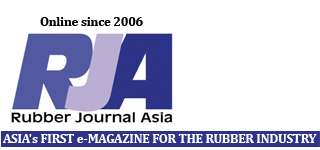 The price of rubber in the global commodities market is expected to rise up to US$2,500 per tonne due to the improved state of the world economy and the joint efforts of four major rubber-producing countries – Malaysia, Vietnam, Thailand, and Indonesia – to cut back rubber supply, a senior official from Cambodia’s Ministry of Agriculture said.
The price of rubber in the global commodities market is expected to rise up to US$2,500 per tonne due to the improved state of the world economy and the joint efforts of four major rubber-producing countries – Malaysia, Vietnam, Thailand, and Indonesia – to cut back rubber supply, a senior official from Cambodia’s Ministry of Agriculture said.
In an interview with a local news agency, Pol Sopha, general directorate of rubber at the ministry, said that the four key countries in the Association of Natural Rubber Producing Countries (ANRPC) have agreed to suspend their exports in order to stabilise rubber prices in the market.
The export suspension agreement between the four countries has led to the 300,000-tonne decrease in the global supply of natural rubber which led to increased prices, Sopha said. He also added that they are anticipating rubber prices to rise and reach between US$2,000 and US$2,500 per tonne next year.
He also pointed out that both the US and other global economies were slowly recovering causing a rise in demand for natural rubber, which further pushed prices up.
Men Sopheak, secretary-general of the Association for Rubber Development in Cambodia, in an interview with the same local news agency said that climatic factors were also responsible for the shortfall in global supplies.
The weather has not been favourable in rubber-producing countries lately, with rains preventing the tapping of rubber trees for latex to produce rubber bales for export, he said.Many companies have suspended their production and led to increased prices, he added.
Current prices stand at about US$1,860 per tonne and if the four key ANRPC member nations continue to jointly cut rubber exports by at least 15%, prices are expected to stabilise in the market or even rise, Sopheak said.
However, he warned that it was too early for Cambodian rubber producers to start rejoicing, seeing that the situation is still fluid. If Thailand, Malaysia, Vietnam and Indonesia resume their normal production levels and increase their rubber exports, prices will go down again, he said.
Lim Heng, chairman of Heng Mean Investment Co., who owns large rubber plantations in Kampong Cham province, said that the four rubber-producing nations jointly colluded to stabilise global rubber prices as it is in their interest that prices remain stable. He doesn’t think that the countries will resume normal production to cause prices to fall again.
According to the Ministry of Agriculture’s figures as at September this year, Cambodia exported 82,825 tonnes of rubber – up almost 11% compared with the same period last year.
The ministry’s figures also show that the number of rubber plantations continues to rise – mostly in the northeast provinces of Mondulkiri and Rattanakiri. According to the ministry, total rubber plantation areas reached 402,310 hectares in September, far ahead of the government’s target of 400,000 hectares by 2020.
